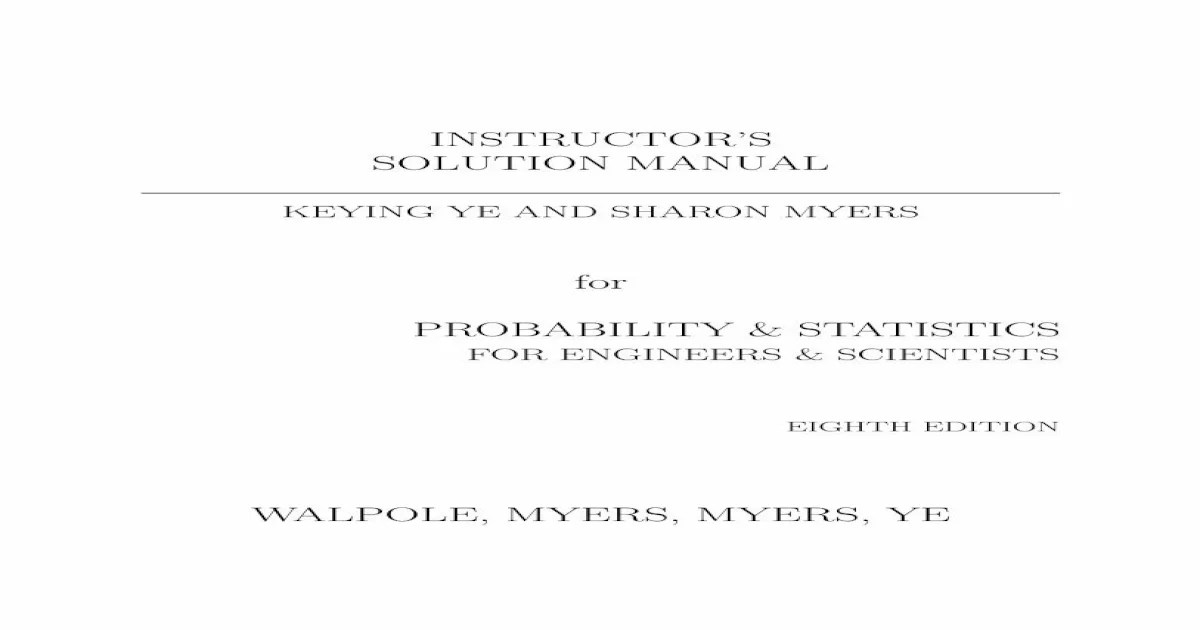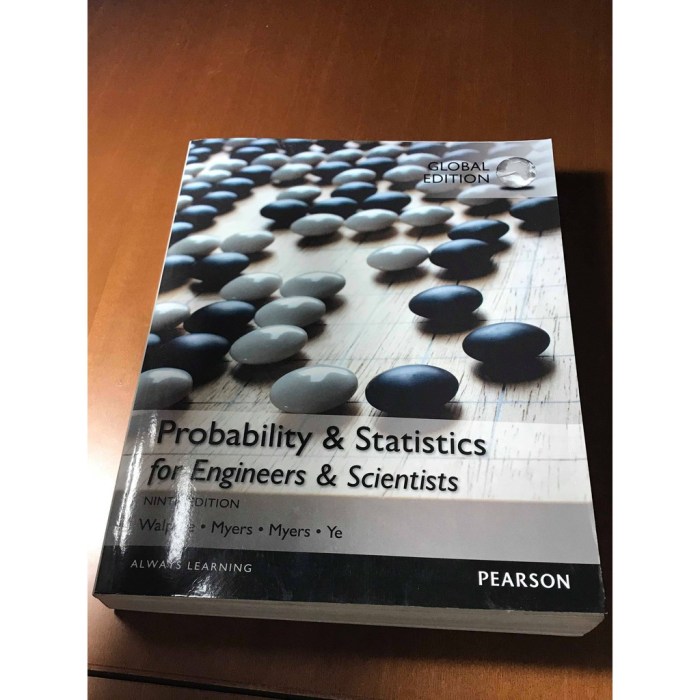Probability and statistics for scientists and engineers 9th edition pdf – Probability and Statistics for Scientists and Engineers, 9th Edition PDF, opens the door to a world where data takes center stage, guiding scientific inquiry and engineering innovation. This comprehensive guide delves into the fundamentals of probability and statistics, equipping readers with the tools to make informed decisions and draw meaningful conclusions from complex data.
From its historical roots to cutting-edge applications, this book explores the diverse ways probability and statistics shape our understanding of the natural world and technological advancements. Whether you’re a seasoned scientist or an aspiring engineer, this guide will empower you to harness the power of data and make a lasting impact in your field.
Probability and Statistics for Scientists and Engineers: An Overview

Probability and statistics are fundamental tools in scientific and engineering disciplines, providing a framework for understanding uncertainty and making informed decisions in the face of complex data.
Historical Development
- Probability theory emerged in the 17th century with the work of Pierre de Fermat and Blaise Pascal.
- Statistics developed as a separate field in the 19th century, with contributions from mathematicians like Carl Friedrich Gauss and Sir Francis Galton.
- The 20th century saw the development of statistical methods for hypothesis testing, regression analysis, and other applications.
Applications
- Physics: Modeling physical phenomena, analyzing experimental data
- Chemistry: Designing experiments, analyzing chemical reactions
- Biology: Understanding genetic inheritance, predicting disease outcomes
- Engineering: Reliability analysis, quality control, signal processing
Basic Concepts of Probability: Probability And Statistics For Scientists And Engineers 9th Edition Pdf
Probability quantifies the likelihood of an event occurring.
Types of Probability Distributions
- Discrete: Events can only take on a finite or countable number of values (e.g., binomial distribution)
- Continuous: Events can take on any value within a specified range (e.g., normal distribution)
Conditional Probability and Bayes’ Theorem
Conditional probability measures the probability of an event occurring given that another event has already occurred.
Bayes’ theorem allows us to update our beliefs about an event based on new information.
Statistical Inference
Statistical inference allows us to make conclusions about a population based on a sample.
Hypothesis Testing
- Null hypothesis: States that there is no significant difference or effect.
- Alternative hypothesis: States that there is a significant difference or effect.
- P-value: The probability of observing the sample data if the null hypothesis is true.
Confidence Intervals
A range of values within which the true population parameter is likely to fall.
Regression Analysis
Regression analysis models the relationship between a dependent variable and one or more independent variables.
Types of Regression Models
- Linear regression: Dependent variable is linearly related to the independent variables.
- Multiple regression: Multiple independent variables are considered.
- Nonlinear regression: Dependent variable is nonlinearly related to the independent variables.
Interpretation, Probability and statistics for scientists and engineers 9th edition pdf
Regression coefficients indicate the strength and direction of the relationship between the variables.
Model fit is assessed using measures like R-squared and adjusted R-squared.
Analysis of Variance (ANOVA)
ANOVA compares the means of multiple groups or treatments.
Types of ANOVA Models
- One-way ANOVA: Compares the means of two or more groups.
- Two-way ANOVA: Compares the means of two or more groups on two different factors.
- Multi-way ANOVA: Compares the means of two or more groups on multiple factors.
Interpretation, Probability and statistics for scientists and engineers 9th edition pdf
ANOVA results indicate whether there is a significant difference between the group means.
Post-hoc tests can be used to identify specific differences between groups.
Nonparametric Statistics

Nonparametric statistics are used when the assumptions of parametric tests are not met.
Types of Nonparametric Tests
- Chi-square test: Tests for differences in proportions.
- Kolmogorov-Smirnov test: Tests for differences in distribution.
- Mann-Whitney U test: Tests for differences in medians.
Interpretation, Probability and statistics for scientists and engineers 9th edition pdf
Nonparametric test results provide insights into differences between groups without assuming specific distribution.
Bayesian Statistics
Bayesian statistics incorporates prior knowledge into the analysis.
Bayes’ Theorem
Bayes’ theorem updates the probability of an event based on new information.
Advantages and Disadvantages
- Advantages: Incorporates prior knowledge, can be more accurate in some cases.
- Disadvantages: Requires prior knowledge, can be computationally intensive.
Applications of Probability and Statistics in Science and Engineering

Probability and statistics are essential tools in a wide range of scientific and engineering disciplines.
Physics
- Modeling particle behavior, analyzing experimental data
Chemistry
- Designing experiments, predicting reaction outcomes
Biology
- Understanding genetic inheritance, predicting disease outcomes
Computer Science
- Modeling data, developing algorithms
Popular Questions
What is the significance of probability and statistics in scientific and engineering disciplines?
Probability and statistics provide a framework for understanding and quantifying uncertainty, allowing scientists and engineers to make informed decisions based on limited data and predict future outcomes.
What are the key concepts covered in this book?
The book covers fundamental concepts such as probability distributions, conditional probability, statistical inference, regression analysis, analysis of variance, nonparametric statistics, and Bayesian statistics.
How can I apply probability and statistics in my own research or projects?
The book provides numerous examples and exercises to illustrate the practical applications of probability and statistics in various scientific and engineering fields, such as physics, chemistry, biology, and computer science.